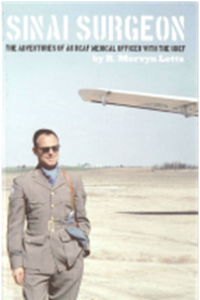 Katherine Dewer, Called to Serve: Georgina Pope Canadian Military
Katherine Dewer, Called to Serve: Georgina Pope Canadian Military
 Shawna M. Quinn, Agnes Warner and Nursing Sisters of the Great War, Goose Lane Editions, Fredericton, NB (1977)
Shawna M. Quinn, Agnes Warner and Nursing Sisters of the Great War, Goose Lane Editions, Fredericton, NB (1977)
Shawna Quinn considers the experiences of New Brunswick’s nursing sisters — the gruelling conditions of work and the brutal realities they faced from possible attacks and bombings. Using the letters, diaries, and published accounts of Agnes Warner, Quinn paints a complete picture of the adventurous young women who witnessed first-hand the horrors of the Great War. Click here to read the first 26 pages. The complete book (176 pp) is available from Amazon and Indigo.
R.C.A.M.C Medical Officer In the Field Overseas 1939-1945, Dr Ken Bell, MD (1992)
A recently discovered manuscript by Dr Ken Bell, MD, a graduate of the Univ of Western Ontario (37) and a resident of Sarnia, Ontario, in 1939, raises some interesting questions. While the manuscript is based on the diaries and recollections there little personal information, particularly rank on release as he appears to have been a highly regarded by his superiors. Any background information on Dr Bell will be appreciated.
 Richards, Stanley T., Lieutenant Commander, RCN (Retired), Operation Sick Bay: The Story of the Sick Berth & Medical Assistant Branch of the Royal Canadian Navy 1910-1965 , Cantaur Publishing, West Vancouver, 1994, ISBN 10: 0969336217 / ISBN 13: 9780969336211
Richards, Stanley T., Lieutenant Commander, RCN (Retired), Operation Sick Bay: The Story of the Sick Berth & Medical Assistant Branch of the Royal Canadian Navy 1910-1965 , Cantaur Publishing, West Vancouver, 1994, ISBN 10: 0969336217 / ISBN 13: 9780969336211
Major Thomas Lyon, CAMC, Maj (Retd) Dan Lyon
Only six of the 94 Canadian Army Medical Corps personnel on board His Majesty’s Hospital Ship Llandovery Castle survived its torpedo sinking in March 1918. One of the survivors was Maj Thomas Lyon, MC, who following the war practiced medicine in Victoria, BC. Click here to learn more about Thomas Lyon and this tragic event.
The Cherry Beret: Distant recollections of WWII as remembered by one of the first CANLOAN  Officers, Col (Retd) Ashton Kerr, MD, (1988)
Officers, Col (Retd) Ashton Kerr, MD, (1988)
This light story describes how Ashton Kerr became one of 43 Royal Canadian Army Medical Corps (RCAMC) officers on loan to the British Army during WWII. His assignments took him overseas where he trained and subsequently participated in the invasions of Italy and Southern France and the liberation of Greece. His final assignment prior to returning to Canada was in Palestine. Col Kerr’s post war assignments included Commanding Officer 1 Canadian Base Medical Unit, Iserlohn, Germany and Regional Surgeon Quebec. On retirement he became Medical Director of the Reddy Memorial Hospital Montreal and was the Hon Col of the 51 Medical Company now 51 Field Ambulance. Click here to read The Cherry Beret.
A Man for All Seasons: Honorary Colonel Arthur Richard (Dick) Cecil Butson, GC, OMM, CStJ, CD, MB, BChir, MD, FRCS(Eng.), FRCS(C), FACS, QHS
Dick Butson was born in Hankow, China, on 24 October 1922 to Cecil Waller Butson and Doris Neave (Stanton-Cook) Butson. He was educated at Legihton Park School in England and was a medical student at Cambridge University during World War Two. During the war, he served with the Light Rescue Services and as a despatch rider with the Home Guard. He was awarded the Defence Medal for these services.
He graduated as a physician from Cambridge University in 1945 (M.B., B.Chir.) and also received his MA from Cambridge in 1946.
He now had to do his National Service but noticed a position for a physician for a Combined Forces Expedition team to the Antarctic. He was one of five physicians who applied. On the selection panel was one of his former professors who asked him if he was the young man who had scaled the wall of one of the University buildings – he was! His love of hiking and mountain climbing plus having a friendly face on the selection committee enable him to be selected for this expedition.
In 1947, Dr. Butson, now a Captain in the Royal Army Medical Corps, joined the Falkland Islands Dependencies Survey. Several of his companions on this expedition had been extensively decorated in WWII and proved to be life- long friends.
On the evening of 26 July 1947, at Grahamland, Antarctica, an American member of the Ronne Antarctic Research Expedition fell into a crevasse some 6 miles from Base. Two teams were sent to the rescue but the hazards of crossing a heavily creviced glacier were much increased by darkness and it was not until 4 o’clock on the morning of the 27th July that the crevasse into which the American had fallen was located. Dr. Butson immediately volunteered to be lowered into the crevasse where he found the man tightly wedged 106 feet down and suffering from shock and exposure. After getting under the man, the crevasse shifted one more time, putting them both in great danger. For nearly and hour, Dick had to chip the ice away in an extremely confined space in order to free the American. The American was then brought to the surface and placed in a tent. Dr. Butson then had to chip his way out of the crevasse and then rendered the necessary medical aid and at dawn returned to Base carrying the injured man on one of the sledges.
Dr. Butson was awarded the Albert Medal for Saving Life on Land for his bravery in putting his life at great risk to save another man’s life. For his service on the Falkland Islands Dependencies Survey, he also received the Polar Medal with bar Antarctic 1947. This was not gazetted until the London Gazette of 17 July 1953. He received an Elizabeth II Polar Medal rather than a George VI due to the long delay in the announcement of the award.
Dick once told me that the curious thing about the rescue was that despite meeting the American on several occasions after the incident, the American never thanked him.
His time with the Falkland Islands Dependencies Survey counted for his National Service stint and he returned to London to train as a surgeon. In 1951, he received his M.D. from the University College Hospital Medical School, London, England. He emigrated to Canada in 1952 to complete his surgical training in Montreal. He passed his Fellowship examinations in England, Canada and the United States thus earning the post-nominal letters, FRCS(Eng.), FRCS(C), and FACS.
He moved to Hamilton, Ontario in 1953 to take up the practice of surgery and became a Clinical Professor of Surgery at McMaster University in 1970. He served as Chief of Staff and Head of General Surgery at St. Joseph’s Hospital in Hamilton while maintaining his private practice.
Dick Butson married first, in 1946, Joyce Scott Cowell. They had two children. He married secondly, in 1967, Eileen Gallon, with whom he had a son.
In 1956, Dr. Butson joined the Royal Hamilton Light Infantry as unit medical officer and served with that unit until 1972. In 1972, Lieutenant-Colonel Butson was made Commanding Officer of 16 Medical Company in Hamilton. In 1977, he became Area Surgeon, Central Militia Area Headquarters. Dick was an extremely active militia medical officer, setting up many fine training programs for his medical units. He developed a militia surgical parachute team and qualified as a Canadian Forces parachutist himself.
In 1971, the living Albert Medal holders were allowed to exchange their Albert Medals for the George Cross, second only to the Victoria Cross in Commonwealth bravery decorations and the highest non-wartime bravery decoration. He received the Canadian Forces Decoration (for twelve years service) in 1968 and the bar in 1978. Dr. Butson was made a Queen’s Honorary Surgeon (QHS) in 1977 and received the Queen’s Silver Jubilee Medal in 1977. He was made an Officer of the Order of Military Merit (OMM) as per Canada Gazette of 03 July 1982.
Dr. Butson was also active in the St. John Ambulance Brigade in Hamilton and served as the Provincial Surgeon for Ontario for several years. He was made a Serving Brother of the Order of St. John in 1977, an Officer of the Order in
1983 and a Commander of the Order in 1989. He thus wears the all blue ribbon of the George Cross, all black ribbon of the Order of St. John and the all white ribbon of the Polar Medal.
Dr. Butson joined the Defence Medical Association of Canada (DMA) in 1971 and served as National President in 1980.
Dr. Butson’s Albert Medal is displayed at the Scott Polar Research Institute in Great Britain along with the Albert Medal of Richard Walter Richards.
His medals include: George Cross (GC), Officer, Order of Military Merit (OMM), Commander, Order of St. John (CStJ), Defence Medal, Polar Medal with bar Antarctica 1947 (EIIR), EIIR Silver Jubilee, Canada 125, EIIR Golden Jubilee (Canadian and British version), EIIR Diamond Jubilee Medal (Canadian and British versions), Canadian Forces Decoration and bar (CD), Service Medal of the Order of St. John.
Dick Butson died on 24 March 2015 at age 92.
By: John Blatherwick Former Naval Person
 Karen Bailey: War Artist
Karen Bailey: War Artist
During the Canadian mission in Afghanistan an artist, Karen Bailey, was sent to the Roles 3 Multinational Medical Unit (R3 MMU) through the DND war artist program. She created a series of paintings which have been purchased by a collector; however they can also be viewed through the following link to her web site: http://www.karenbailey.ca . The Afghanistan link on the left hand side will bring people to images of the paintings, she also has a book called TRIAGE, for which there is a link as well.
Of most recent interest is that her works from Afghanistan have inspired an Australian group, The School of Music Poets of Canberra, to write poems which are included in a collection called “In Response to Triage”. http://sompoets.wordpress.com/projects/response-to-triage/
 Marc Dauphin, Combat Doctor: Life and Death Stories from Kandahar’s Military Hospital, Durham Press, Toronto, Ontario, Canada, ISBN 978-1-45971-926-2
Marc Dauphin, Combat Doctor: Life and Death Stories from Kandahar’s Military Hospital, Durham Press, Toronto, Ontario, Canada, ISBN 978-1-45971-926-2
Combat Doctor presents the stories of the victims of the War in Afghanistan, as told by the last Canadian Officer Commanding at the Kandahar Role 3 Multinational Hospital.
In 2009, Marc Dauphin, an experienced emergency-room physician, served a full tour at the combat hospital in Kandahar. During his time there, he dealt with injuries more horrific than he had ever seen during his civilian experience. He and the Role 3 Hospital’s international staff saw an unparalleled number of severe casualties and yet maintained a survival rate of 97 percent — a record for all times and all wars. It is impossible to remain unmoved by Marc Dauphin’s descriptions of those he treated: the terrified children, the stoic soldiers, those mutilated almost beyond
Le major (ret) Marc Dauphin, médecin militaire, réservite, auteur et un être remarquable. Voici les liens que vous pourriez aimer visiter, parmi bien d’autres, que l’on peut retrouver dans la toile: Article trouvé dans le site de la 52 Amb de Campagne publié dans Le Canada Français par Louise Bédard: http://www.52med.qc.ca/2013/05/le-dr-marc-dauphin-a-inspire-le-personnage-du-colonel-marks/
À par le livre mentionné ici soit “Combat doctor”, qui n’a été publié qu’en anglais, le major Dauphin a écrit le livre suivant:
“Voyage au bout de l’enfer”: http://www.lapresse.ca/la-tribune/merite-estrien/201201/03/01-4482434-voyage-au-bout-de-lenfer.php
Voici la biographie du major (ret) Marc Dauphin: http://marcdauphin.com/index.php/fr/
Click here to view an excellent ABC News interview with Marc Dauphin
To order click here
 Chris Linford, Warrior Rising: A Soldier’s Journey to PTSD and Back, Friesen Press, Victoria, BC, Canada, ISBN: Hardcover: 978-1-4602-1992-8, Paperback: 978-1-4602-1993-5, eBook: 978-1-4602-1994-2
Chris Linford, Warrior Rising: A Soldier’s Journey to PTSD and Back, Friesen Press, Victoria, BC, Canada, ISBN: Hardcover: 978-1-4602-1992-8, Paperback: 978-1-4602-1993-5, eBook: 978-1-4602-1994-2
Warrior Rising is a very personal and inspirational story of LCol Chris Linford’s road to a diagnosis of PTSD after three operational deployments to the Gulf War, Rwanda, and Kandahar, Afghanistan. He recounts his associated war stories, but it was the traumas that impacted him so dramatically leading him to what he describes as the very edge of his personal and professional competence. Finally years later and after months of effective treatment he discovered new ways to improve his health further and has since become involved in peer counselling and ongoing support to veterans who need assistance. To order click here.
 J.W.B. Barr, From Barnyard to Battlefield and Beyond: The Story of a Military Medical Officer, Borealis Press, Nepean, ON, Canada, ISBN: 9780888873002
J.W.B. Barr, From Barnyard to Battlefield and Beyond: The Story of a Military Medical Officer, Borealis Press, Nepean, ON, Canada, ISBN: 9780888873002
This is the story of former Surgeon General, MGen John Barr, CMM, KStJ, CD, QHP, MD, CM, DHA ; soldier, doctor and Canadian legend. From his humble beginnings on a farmstead in Lanark, South Eastern Ontario, to the chaos and confusion of the battlefield, John Barr recounts his life with warmth, compassion and humour. To order click here.
 R. Mervyn Letts, Sinai Surgeon: The Adventures of an RCAF Medical Officer with the UNEF
R. Mervyn Letts, Sinai Surgeon: The Adventures of an RCAF Medical Officer with the UNEF
Sinai Surgeon is an historical narrative of a military surgeon’s experiences and adventures with the United Nations Emergency Force (UNEF) in the Sinai desert during 1966-67, the year leading up to the Six Day War between Israel and Egypt. It focuses on the realities of Peacekeeping in the Gaza Strip and the Sinai, an area of the world which is still a hotbed of interest today and a key feature of Canadian military history. Click to read Chapter 1 of Sinai Surgeon
Dr. R. Mervyn Letts, M.D., FRCSC, is an Orthopaedic Surgeon who in 1966-67 was a Medical Officer in the RCAF posted to the United Nations Emergency Force in the Sinai from a surgical residency at the National Defence Medical Centre in Ottawa in the run-up year to the Six Day War. To order click here.
Helen L. Fowlds, Letters and Diaries of a Nursing Sister
Although they were never published as a book, you can find Nursing Sister Helen L. Fowlds letters and diary on the Trent University website. Her letters can be read by clicking here and her diaries can be read by clicking here.


 Katherine Dewer,
Katherine Dewer, 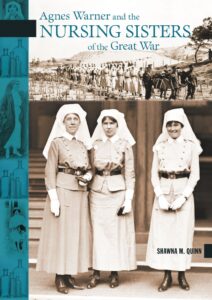 Shawna M. Quinn,
Shawna M. Quinn, 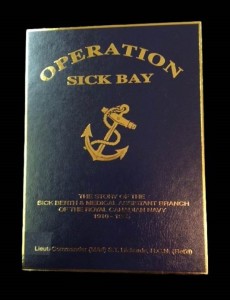
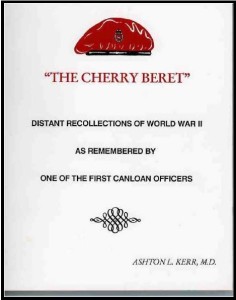
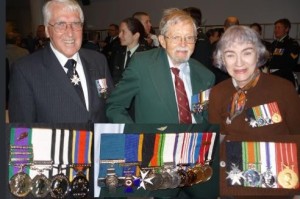

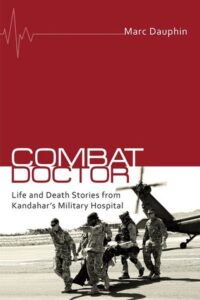 Marc Dauphin,
Marc Dauphin, 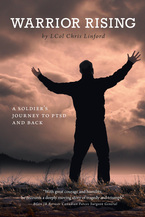 Chris Linford,
Chris Linford, 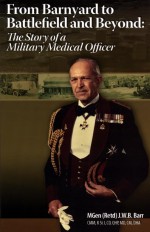 J.W.B. Barr,
J.W.B. Barr, 